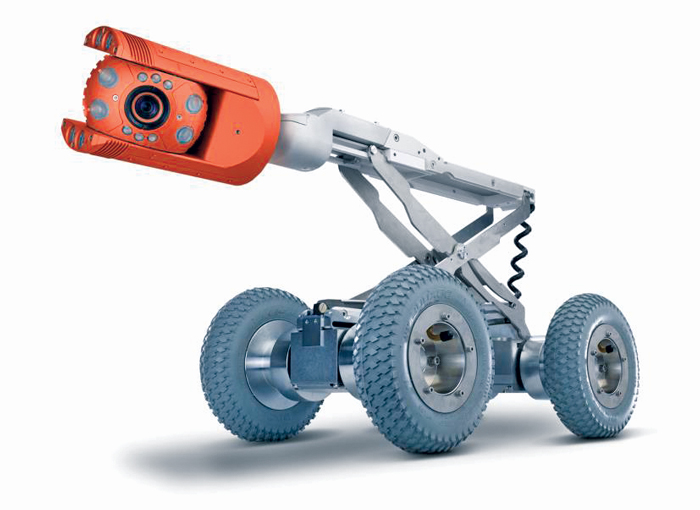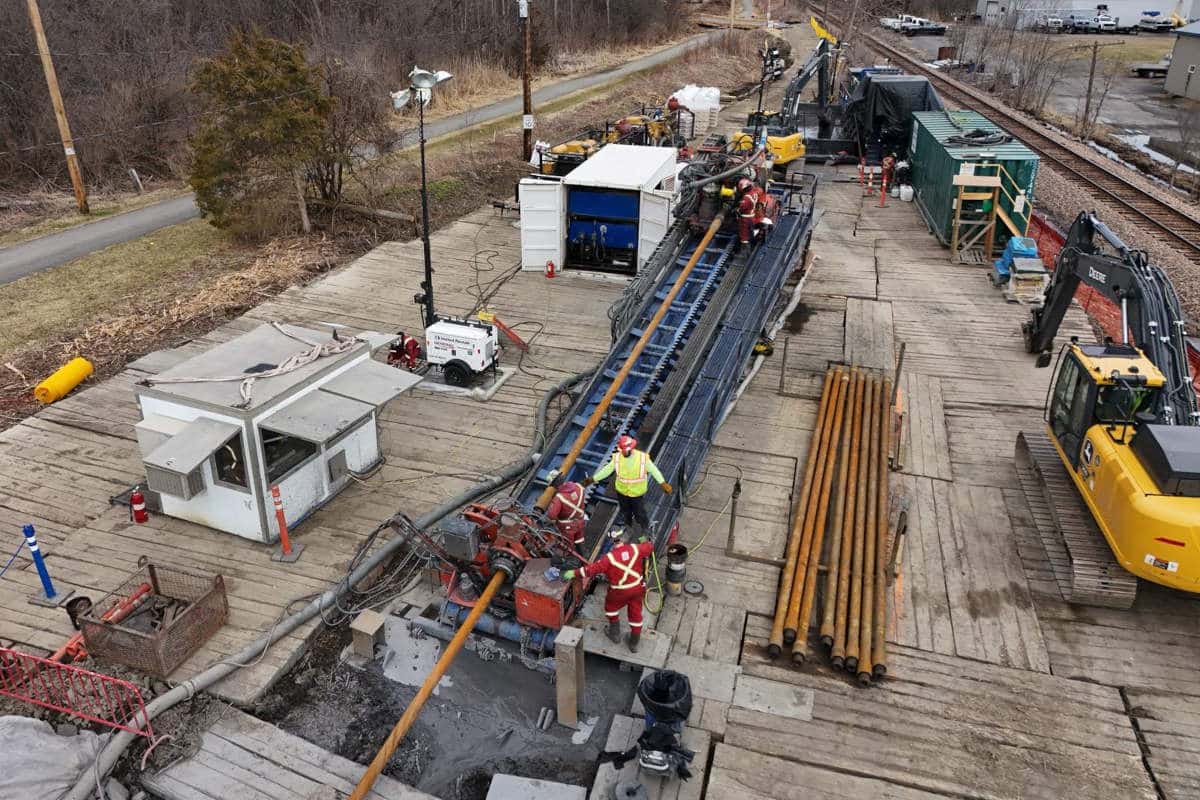High Definition Pipeline Inspection Cameras
Since 1957, the video inspection of pipelines has given system owners valuable information regarding their underground assets. These tools have allowed cities to more accurately assess the condition of their sanitary, storm and water pipelines. The amount and quality of the image data collected by pipeline cameras has increased over the intervening half-century and today RapidView IBAK North America continues this history of innovation by introducing the PEGASUS High Definition Closed-Circuit-Television (HDCCTV) camera to the North American pipeline inspection industry. Why HDCCTV?
Why HDCCTV?
Closed-Circuit-Television (CCTV) inspections have long been the standard for cities that wish to assess their underground pipelines and structures. Pipeline inspection tools may vary in size, capabilities, features and speed, but their one and only job is to provide users with information. That information takes the form of video and still images captured while the camera is in the pipeline.
Imagine for a moment that you are the owner of a gas station. People have been stealing gas from the pumps for years now. You installed a CCTV security system and you can see the people stealing the gas. You can see the cars and make out what kind of clothes they are wearing, but you can’t determine who they are. If you install an HDCCTV camera system, you can easily make out their face, the number on their license plate and zoom in, and read, their name tag on their shirt. Not only can you confirm that you have a problem, but you can better determine the cause of the problem.
The higher quality video image produced by the HDCCTV camera can have a dramatic effect on the accuracy of your pipeline assessment. Simply put, the higher the quality of the image, the easier it is for the inspector to make more informed decisions regarding categorization and severity of defects found within the pipeline. The result is an assessment that is much more accurate and useful to those responsible for making tough rehabilitation decisions with limited resources.
Previous Standards
Regardless of recording medium (VHS, DVD, CD, MPEG) most pipeline inspection systems are providing a video image similar to a standard definition VHS recording. In modern day digital terminology, the video resolution of a NTSC VHS is approximately 240i resolution. How many of us still use VHS tapes? Blockbuster stopped renting VHS tapes in 2005. Why do we still feel that this format is sufficient when inspecting our most critical underground assets?
A common misconception is that if you have a digital monitor, you are seeing HD video. This is not the case. Many manufacturers choose to install wide screen, HD video monitors with their systems, but they are still pushing a low resolution, 4:3 aspect ratio to them. When inspectors or engineers use an HD monitor to view SD video, they are experiencing an even greater reduction in image quality than if they were viewing the video on an older standard definition monitor. The reason is that video processing circuitry in an HD monitor enhances both the good and bad parts of a low resolution image. Users are more likely to notice background color noise, signal interference, color bleeding or edge problems.
The difference in aspect ratios often results in the user “stretching” the smaller 4:3 image out to a 16:9 aspect ratio, thus distorting the image. This distortion can lead to erroneous assessments as a round pipe can appear deflected — or, “zooming” the image so that if fits on the screen, but cropping the image so that the user cannot see the entire image as it runs off the screen.
By contrast, the new RapidView IBAK PEGASUS HDCCTV standard is one new camera system with the capability to record and provide digital video in full 1080p high definition. This new standard has many benefits.
Digital vs. Analog
In 2009, U.S. TV stations were required to stop broadcasting their analog signals, leaving the pipe inspection industry behind. While the majority of camera components used in sewer cameras are DIGITAL (producing information in “1”s or “0”s), the transmission of the image from the camera to the recording device in the vehicle is accomplished via converting it into an ANALOG signal and shipping it over a coaxial cable. Once the signal is received, it is often then “re-digitized” by converting it into an MPEG file. This process leads to loss of picture fidelity and opens the system up to interference encountered by the ANALOG signal. Each transformation of the image signal results lower and lower picture quality. A simple way to think of this is that “a photocopy of a photocopy is always lower quality.”
It is also important to consider that not all digital signals are HD. This is a common misconception. Any image or video can be converted and transmitted as a digital signal, but only HDCCTV offers the higher picture quality. Many pipeline inspections are currently stored on digital media (mpeg, CD, DVD, etc.), but this does not make them HD. If you dub a VHS tape into a digital file, it does not increase the quality of the video — in fact, the conversion often reduces the quality and you are left with a video that is digital, but in no way high definition.
RapidView IBAK’s PEGASUS HDCCTV systems transmit digital video data through fiber-optic cables, maintaining signal quality throughout the system. Interference is greatly reduced due to the use of a digital signal. HDCCTV simply cannot produce a snowy or blurry picture from a weak signal like an analog system will.
Fiber Optics
Fiber-optic transmission through the camera cable enables them to move large amounts of digital data over longer lengths of cable with no loss of quality. Moving the large amounts of digital data over standard coaxial cable would be impossible, and it is therefore necessary to use a fiber cable system to achieve true HD quality over long distances.
Older coaxial cables can only bend so many times before the copper inside is destroyed. Imagine taking a paperclip and bending it back and forth until it gets warm and breaks — this is what happens to a coaxial cable over time. Fiber-optic cables are much more flexible and allow the cable to bend without causing damage to the data transmission and without reducing overall cable strength. Thinner and lighter, fiber-optic cable can also be deployed in longer applications easier than traditional coaxial cable.
If a cut or damage does happen to a fiber-optic cable, it is simple to find the exact area of damage, reducing time needed to discover the problem. A special tool can be used to project light through the fiber cable, making the break easily visible on the outside of the cable.
Image Size and Quality
True HDCCTV provides users with visual information that is up to five times more detailed and considerably larger that standard CCTV. This image quality has a direct effect on the amount and accuracy of observations inside a pipeline. Colors look more realistic and details are clearly visible. How many older inspection videos have blurry pictures that make determining the severity of a defect impossible? With HDCCTV you don’t have to worry about that. Better visual data leads to more accurate assessments and better decision-making.
While this fact is verified in various academic studies, it is simple to understand that higher resolution data enables inspectors to find and categorize more defects. Current NASSCO P.A.C.P. specifications for conducting pipeline inspections contain many requirements that are directly related to picture quality. Maximum speed of inspection, camera location in pipeline, use of sufficient lighting and minimum image resolution are all specified by NASSCO to insure the best visual data acquisition.
Zooming In
Zooming into a HDCCTV video image provides better results than older standard definition systems. On-board optical zooming provides extreme close-ups of pipeline features, while supplemental digital zooming accomplished by the software can zoom in even further. The high resolution of the HDCCTV video image means that you can zoom into a portion of the image and still maintain great visual fidelity. This makes an HDCCTV system perfect for larger diameter pipelines. Users can expect to travel on the bottom of a 120-in. diameter pipeline and make quick, accurate observations from the top of the pipeline using a HD camera’s zoom feature.
An Evolving Standard
As industry standards change, it is important to remember why inspections are conducted. Inspections are conducted to provide useable data to decision makers. The inevitable switch from standard to High-Definition will help system owners make better decisions just like the advent of pan-and-tilt cameras, color video images or data logging software has in the past. These tools provide better data or access to existing data. It is important that contractors, municipal managers, engineers and system owners understand how and why these technological advances have a positive impact on their assessment efforts and rehabilitation programs.
Matthew Sutton is vice president of RapidView LLC.





Comments are closed here.